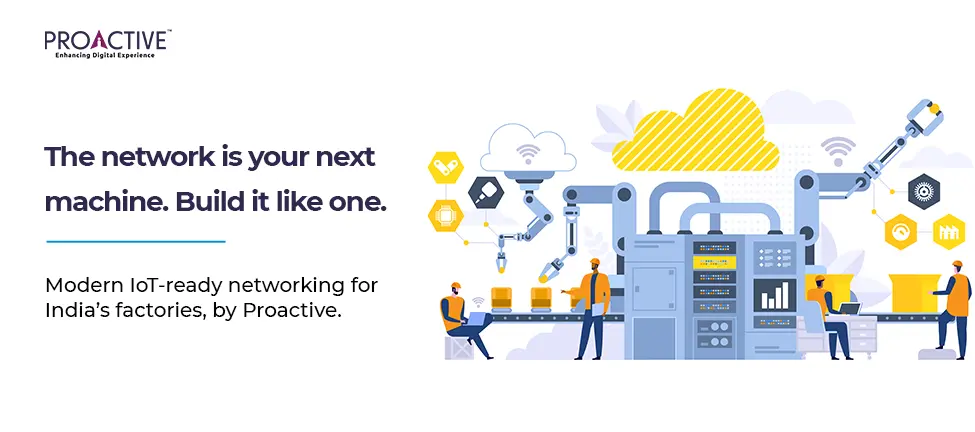Updated: July 16, 2025

The promise of industrial IoT has landed. Sensors monitor machines. PLCs sync to the cloud. Production lines respond in real time. In factories from Rajkot to Rudrapur, the shift is underway. But many manufacturers still operate with networks built for email, not edge devices.
IoT brings scale, speed, and sensitivity. Without the right network foundation, those gains collapse into downtime, data loss, and rising maintenance calls. Here are the top five challenges we see, and how India’s smart factories are solving them.
A single smart assembly line can include hundreds of endpoints, RFID scanners, vibration sensors, temperature monitors, and robotic arms. Multiply that across shop floors and you’re dealing with thousands of constantly active devices.
Why it matters: Traditional networks weren’t built for this level of density or east-west traffic. Unmanaged switches get overloaded. Access points drop devices. Bandwidth bottlenecks stall operations.
What to do: Move to modular, high-capacity switching. Use Wi-Fi 6 for dense environments. Design VLANs by function, safety, production, asset tracking, and set policies accordingly. Add stackable switches and PoE+ ports where needed.
Heat, dust, vibrations, and moisture don’t play well with typical networking hardware. In sectors like textiles or heavy engineering, floor conditions demand hardened infrastructure.
Why it matters: Standard switches and APs fail early, require frequent replacement, and disrupt uptime. Downtime here isn't just a normal glitch; it impacts revenue.
What to do: Deploy industrial-grade gear. Ruggedised switches, sealed APs, and fanless designs ensure performance in harsh environments. Use DIN-rail mounting for secure placement in shop-floor enclosures.
Many networks can’t show which device is consuming bandwidth, going offline, or acting abnormally. When machines behave unexpectedly, root cause analysis takes hours.
Why it matters: You can’t fix what you can’t see. IoT traffic spikes or link losses need instant diagnosis to avoid cascading failures.
What to do: Use cloud-managed networking with real-time analytics. Cisco Meraki and Catalyst Center provide visibility down to individual ports and devices. Set alerts for deviation from normal device behaviour.
Every new sensor or controller adds another potential point of breach. Without segmentation, a vulnerability in a low-priority device can let threats into core systems.
Why it matters: Manufacturing ransomware attacks are rising. Many target unsecured IoT networks. A flat network is an open invitation.
What to do: Implement Zero Trust principles. Isolate OT and IT traffic. Use NAC (Network Access Control) to authenticate devices. Enforce least-privilege policies on industrial switches and apply role-based VLAN tagging.
Factories grow. New units come online. New sensors get added. But if your network needs a full redesign every time you scale, you lose momentum.
Why it matters: Time spent planning network upgrades is time not spent optimising production. Downtime during expansion kills efficiency.
What to do: Design for scale from the start. Use SD-WAN to connect new units quickly. Choose switches that support stacking. Adopt cloud-managed provisioning so new sites come online in hours, not weeks.
From Ludhiana to Hosur, Proactive is helping Indian manufacturers modernise their networks for IoT. We don’t sell checklists, we build what works.
We deploy Cisco rugged switches, Meraki cloud dashboards, and enterprise-grade structured cabling. We design VLAN maps, isolate OT traffic, and install air-cooled network enclosures. Our managed services team keeps it all monitored and updated, so your plant keeps running.
If your PLCs are smart but your switches aren’t, it's time to rethink the base layer.